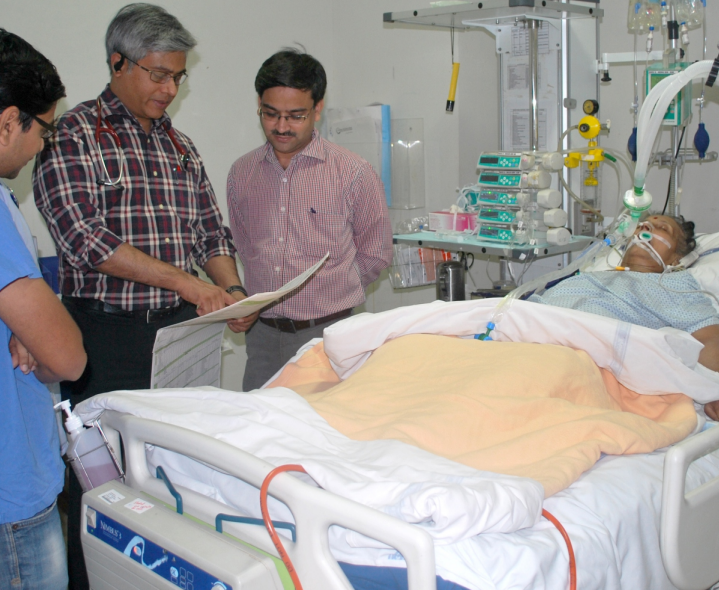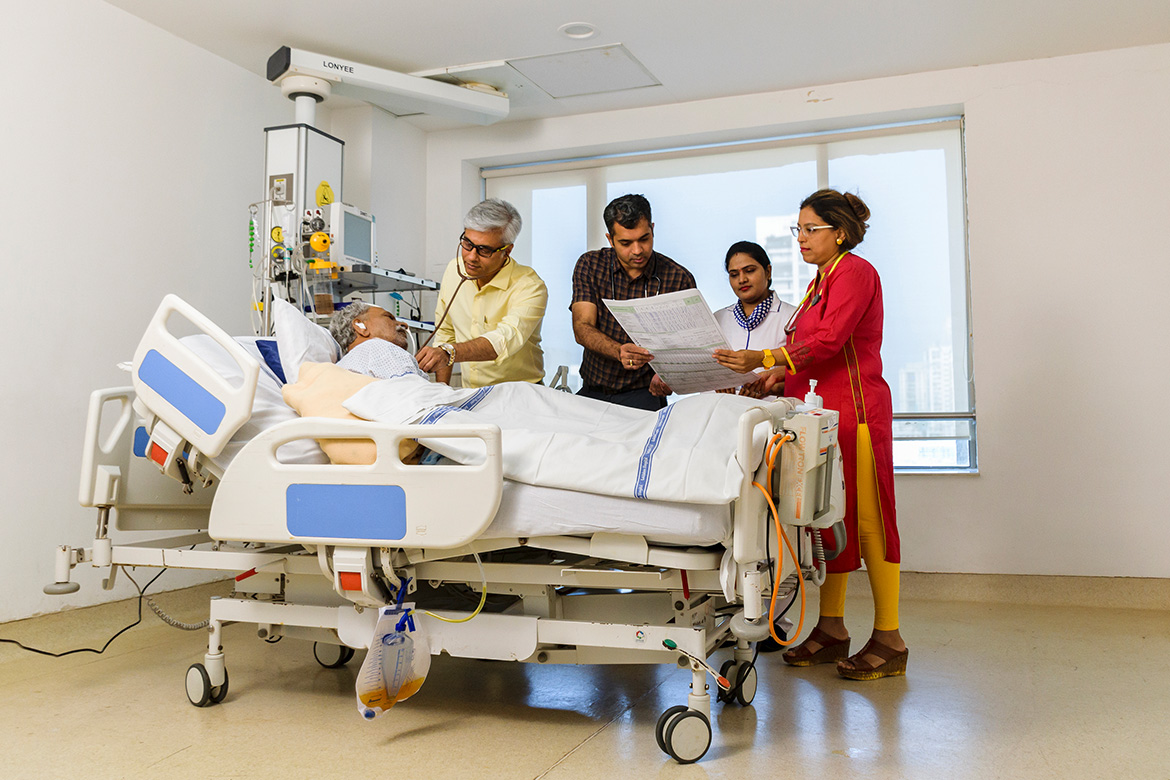Fever is a serious concern in the ICU as sepsis is a leading cause of death. However, only 50% of fevers in the ICU are due to infectious causes and the rest are due to non-infectious causes. FStill, most patients are started on antibiotics as soon as they develop fever. This leads to the development of drug-resistant pathogens and exposes the patient to serious side effects.

Clinically relevant fever is defined as a core body temperature of > 101°F. Temperatures between 102°F-106°F are more likely to be due to infection. Temperatures <102°F or >106°F are usually due to non-infectious causes like deep venous thrombosis, infusion reactions, aspiration, drug fever and the neuroleptic malignant syndrome. Fever should be distinguished from hyperthermia as antipyretics are ineffective in the latter.
Although fever can have deleterious effects, it helps to rid the host of invading pathogens. Plasmodium species causing malaria, spirochaetes and bacteria, such as Streptococcus pneumoniae, are inhibited by elevated body temperatures. Elevated body temperature enhances several parameters of immune function, including antibody production, T-cell activation, production of cytokines, and enhanced neutrophil and macrophage function. Absence of fever often heralds a poor prognosis.
| Table 1: Non Infectious Causes Of Fever In The Icu By Organs Systems | |
| Brain | Cerebral Infarction/Haemorrhage, Subarachnoid Haemorrhage |
| Heart | Acute Myocardial Infarction, Pericarditis |
| Pulmonary | Aspiration, Atelectasis, Pulmonary Embolism, ARDS |
| Abdomen | Ischaemic Bowel, Gastrointestinal Bleeding, Pancreatitis, Hepatitis, Cirrhosis, Adrenal Insufficiency |
| Vascular | Deep Vein Thrombosis, Thrombophlebitis |
| Cutaneous | Decubitus Ulcers |
| Miscellaneous | Drug Fever, Reaction to Radiological Contrast, Fat Embolism, Neoplasm, Blood Transfusion, Transplant Rejection and Gout |
Diagnosing Fever
Characterising fever magnitude, pattern, and relation to pulse could provide important diagnostic clues.
- Fevers higher than 106°F are often a result of non-infectious causes, such as malignant hyperthermia, heat stroke, drug fever, adrenal insufficiency, or thyroid storm.
- Continuous fever has been associated with Gram-negative infections, drug fever and fever due to central nervous system disease (i.e., encephalitis, subarachnoid haemorrhage).
- Relative bradycardia during fever, especially when accompanied by leucocytosis, eosinophilia, or cutaneous rash, may occur in drug fever.
- Fever in the first 2–3 postoperative days is usually non-infectious, and benign due to tissue injury or atelectasis, whereas fever arising 5–7 days postoperatively usually indicates a surgical site infection.
- Fever arising after 10–14 days of antibiotic treatment could be due to infection by resistant organisms especially candida or other fungi.
In contrast to fever, hyperthermia is characterised by an elevation of the core body temperature without a change in the hypothalamic set point and occurs essentially due to a failure to dissipate heat in relation to its rate of production. Common causes include pontine haemorrhage, heat stroke, malignant hyperthermia and the neuroleptic malignant syndrome.
A diagnosis of heat stroke is suggested when hyperthermia is associated with altered mentation after exposure to high environmental temperatures or vigorous exercise, with core body temperature of ten e xceeding 107°F. Investigations reveal metabolic acidosis and electrolyte abnormalities like hyperkalemia, hypocalcaemia and hyperphosphatemia. Treatment involves cooling by evaporation (tepid water sponging), conduction (immersion in cold water), and management of fluid, electrolyte and acid-base balance.
Malignant hyperthermia a is an autosomal dominant myopathy. The genetic defect is on chromosome 19, which codes for the ryanodine receptor that regulates the calcium channel. Release of large amounts of calcium from the sarcoplasmic reticulum occurs on exposure of a susceptible individual to anaesthetic triggering agents and depolarising muscle relaxants. This causes intense muscular contraction, with subsequent muscular rigidity and hyperthermia. Other manifestations include metabolic acidosis, disseminated intravascular coagulation and renal failure. Management includes stopping all triggering agents, use of dantrolene sodium and treatment of organ failure.
The Neuroleptic Malignant Syndrome (NMS) is an idiosyncratic reaction to neuroleptic drugs characterised by encephalopathy, muscle rigidity, hyperthermia and dysautonomia. These drugs appear to block dopamine receptors in the hypothalamus with consequent altered thermoregulation and heat dissipation. Rhabdomyolysis and renal failure may occur. Management involves discontinuation of the offending drugs, cooling, and use of dopamine agonists like bromocriptine, anticholinergic agents and muscle relaxants like dantrolene.
To Treat or Not?
The absence of fever in sepsis is associated with significantly higher mortality, thus proving that fever has a protective function. Fever upgrades immune responses and inhibits the proliferation of pathogens. Therefore, the use of antipyretics, cooling blankets or other forms of temperature reduction in febrile patients should not be routinely utilised. It is important to note that cooling blankets often increase fever by inducing shivering, thus increasing oxygen consumption and causing discomfort in the patients.
There are only a few situations where fever is clearly detrimental and it is advisable to lower the body temperature. These include temperature 41·1°C (106°F), patients with limited cardiorespiratory reserve, recent stroke, traumatic brain injury and possibly pregnancy. In these conditions, the elevated temperature itself or the associated increase in cardiac output can worsen outcome of the underlying acute disorder. Antipyretic drugs like paracetamol are preferred to physical cooling in most cases, as the latter may induce shivering and further increase cardiac output and oxygen demand. However, in patients with fulminant hepatic failure, paracetamol is best avoided as abnormal metabolism may lead to the formation of toxic metabolites and liver injury.
 Back to Site
Back to Site